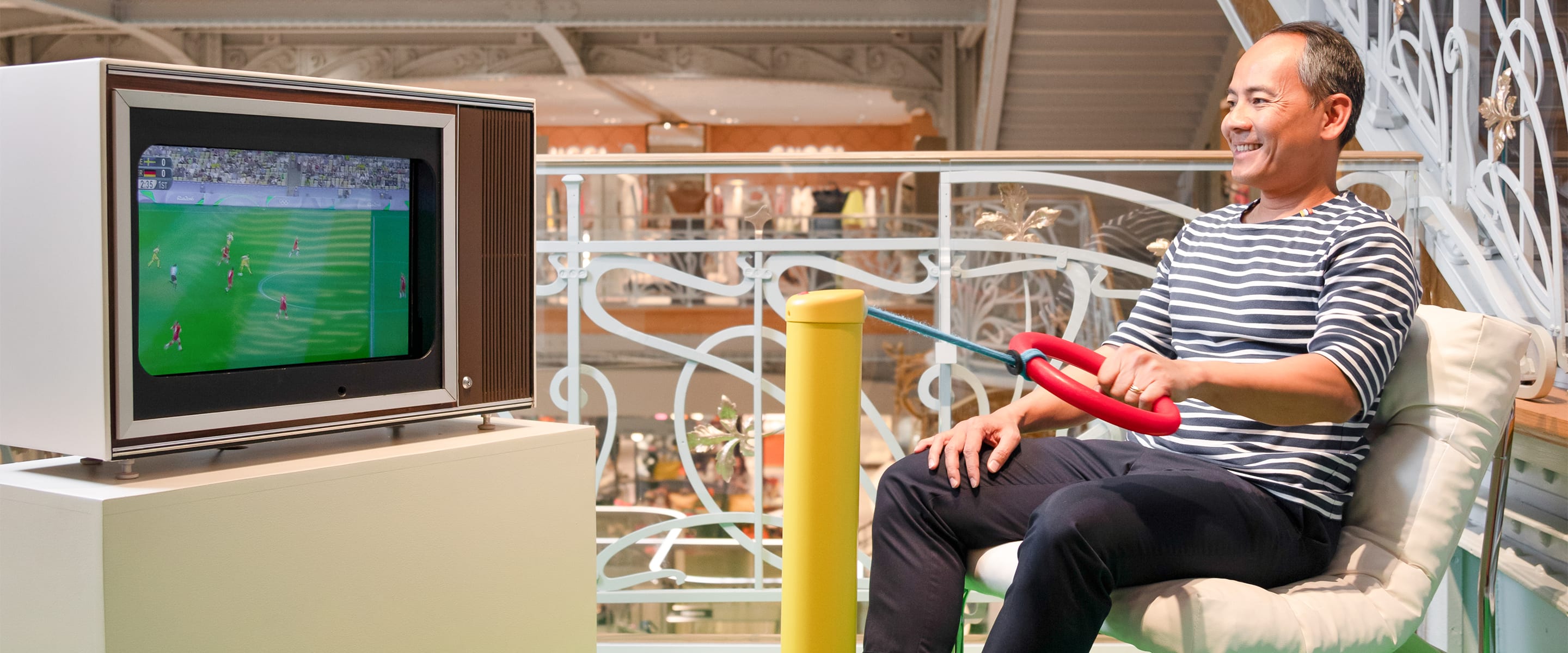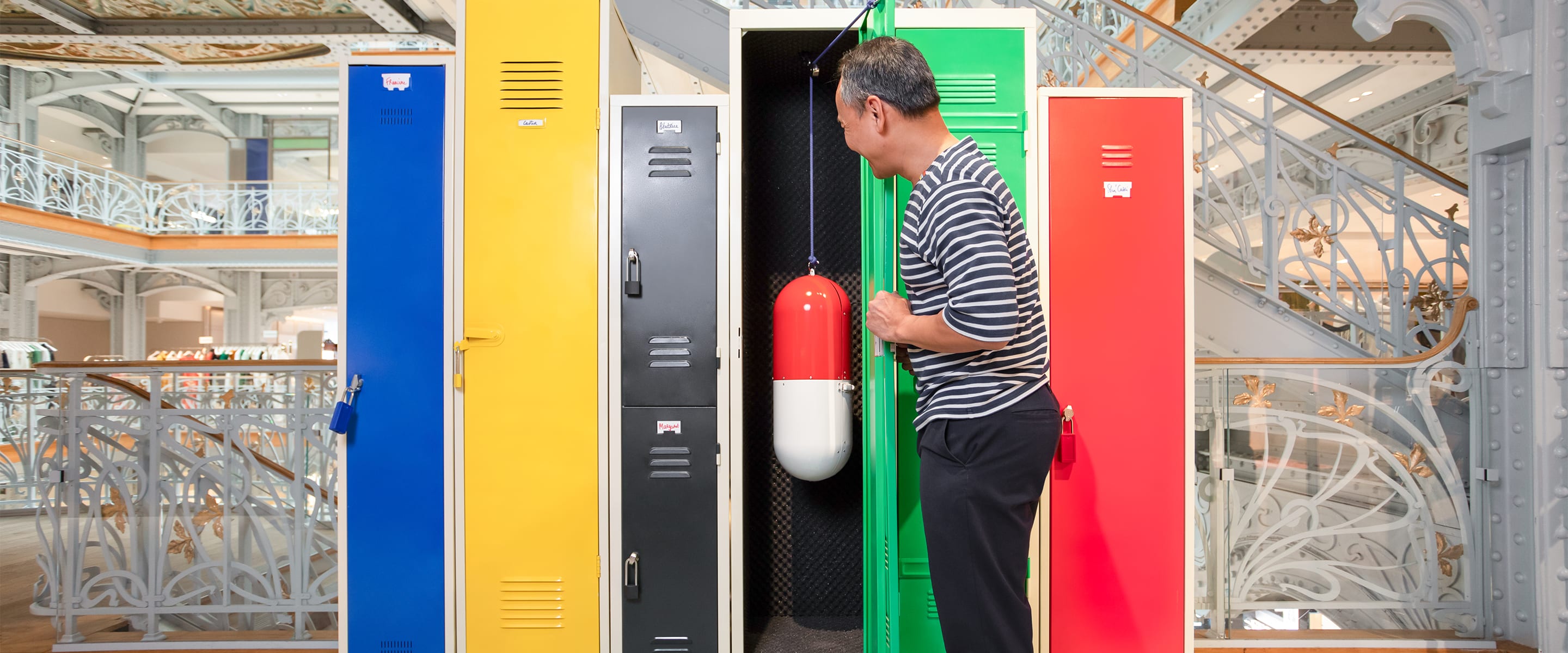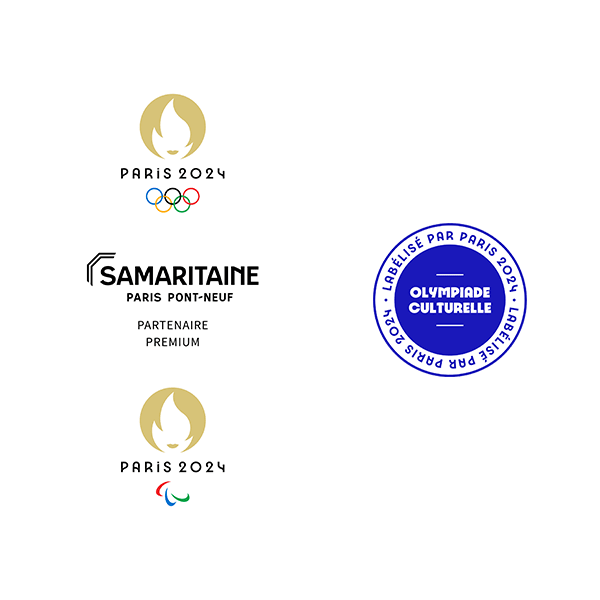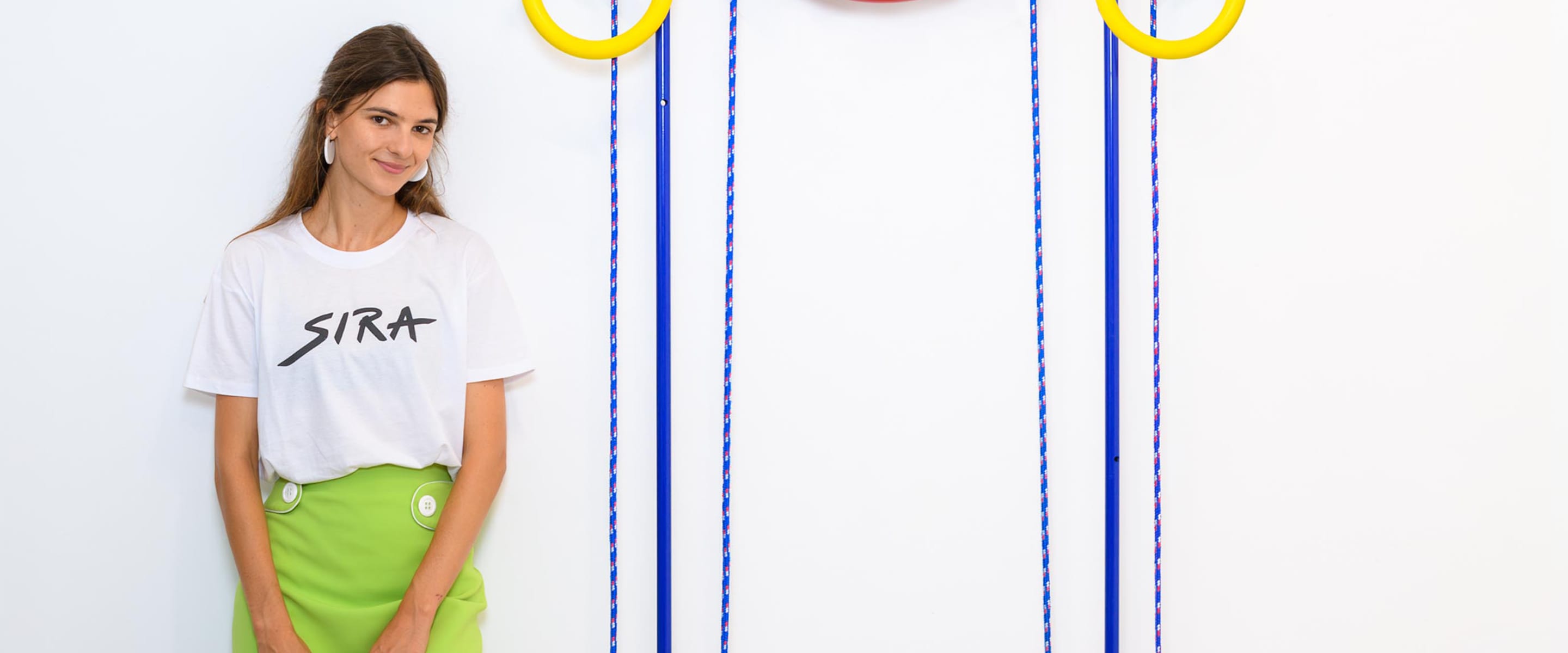In her studio, Agnst Design, the artist explores social issues through joyous, playful works that combine design and contemporary art. For Samaritaine, she reveals pieces that relate to sports and the body—the female body in particular.
How and why did contemporary art become part of your life?
My family has no affinity towards contemporary art. They are even wary of it… Rightfully so, at times! This affected my work because I am aware of the elitism that exists in the arts. I began by studying design, but pure functionality was not enough for me, or just didn’t interest me. It became a pretext to discussion. My studies at Arts Appliqués were a bit boring. It was too rigid for me. I switched to Beaux-Arts in Annecy, where it was the complete opposite, much too abstract! Then I went to École Boulle in Paris, where I found the right balance, with professors who encouraged me to draw outside the lines and reinvent the rules using my own codes. That gave me confidence! After graduating, I was given the Audi Talent award for my final project, and I was able to exhibit my work at the Palais de Tokyo. I felt completely legitimate, and I launched my artist pseudonym, Agnst Design.
This name calls to mind radical, critical design. Can you tell us more about it?
I have a real desire to push back against consumerist design.
This name even includes the word “design,” but it goes against it at the same time. It implies not wanting to meet design definitions. It blurs the lines. I removed the “a” and the “i” to avoid being too direct. In English, people sometimes read it as an abbreviation of “angst,” which also speaks to my work, so that doesn’t bother me. My work is hybrid, colorful, humorous.
Who are your role models?
The first one that comes to mind is Alessandro Mendini. He is an Italian designer who creates unusable household items! He also wrote extensively for the magazine Casabella, and his theories were later combined to create a book on the elements of design, which became my bedside book. I also like “Présence Panchounette,” a collection of artists from the 1960s to 1990, who stood up against good taste. They developed a popular aesthetic, with simple, effective semantics.
Where do you get your ideas: for an object to subvert, or a social issue that you would like to take on?
They always arise from a social issue. I never know in advance what type of objects it will generate. The art world still struggles to see function as a medium. During the lockdowns, for example, I worked on technology that rather than saving us time, pushed us to work more and to be constantly connected. What interested me was the misleading and alienating character of this technology. It inspired me to make a nomadic battery made of a very heavy ball and chain.
Why does the world of sports inspire you so much?
I am not at all athletic, maybe that is why it interests me! I did a project on fitness, Self Esteem Shapers, because I wanted to understand our relationship to our bodies after reading David Le Breton’s book, Anthropology of the Body and Modernity. I learned that the relationship to the body is not universal or immutable, it is socially constructed. Which means that we can question it! In our individualistic society, the body distinguishes us. It becomes a window into our mindset and our inner life. We must be powerful and look powerful; it’s reassuring. Why do we work out? There are good reasons, and there are also some very bad ones.
Your work is very colorful and playful, but it hides a protest. Do you like paradoxes?
Yes, it’s both light-hearted and committed! This reflects my personality. I have these same paradoxes in me. When talking about an important topic, it’s best to make it interesting and joyful! Then there is a more calculated side. It’s a kind of ruse, bait that looks easy at first glance, to get the viewer to open up. What they are going to remember is their first impression, but the transformative effect of the work remains. I like the idea of planting seeds of reflection, talking about topics that are important to me without being moralistic or dogmatic.
Can you tell us about the pieces exhibited at Samaritaine? What do they say?
For Paris 2024, I am still talking about sports, but this time at the collective level, with an eye to the feminine condition in competitions. For example, at Samaritaine I display interactive punching bags, called “Radio Boxe.” A sound system is triggered when the bags are struck to symbolize the idea of continuously fighting back against the patriarchy. There are also Self Esteem Shapers, fitness machines such as the “Pull Down Shake Up Mirror,” a traction machine. To lower the height of a mirror that is too high to see into, you have to lift weights. It helps to measure the level of narcissism! The idea is to evoke the fact that women are victims of “being viewed,” held prisoner by the way men view them.
Lastly, I wanted to talk about the sexualization of athletes, as for a long time, women were encouraged to cover their bodies out of modesty, to the detriment of their comfort. My three-balloon installation, from which a tampon string hangs, refers to a 2021 scandal. That year, the Norwegian beach handball team was fined because they wore shorts instead of the regulation bikini bottoms.
What does Samaritaine represent for you?
Heritage and a culture of excellence! The department store embodies the legacy of a love of the arts held dear by its founder Ernest Cognacq. That is part of its lineage, its history and values. I am, of course, sensitive to that above all. And I find that Samaritaine and I share the same mischievous, playful side!











